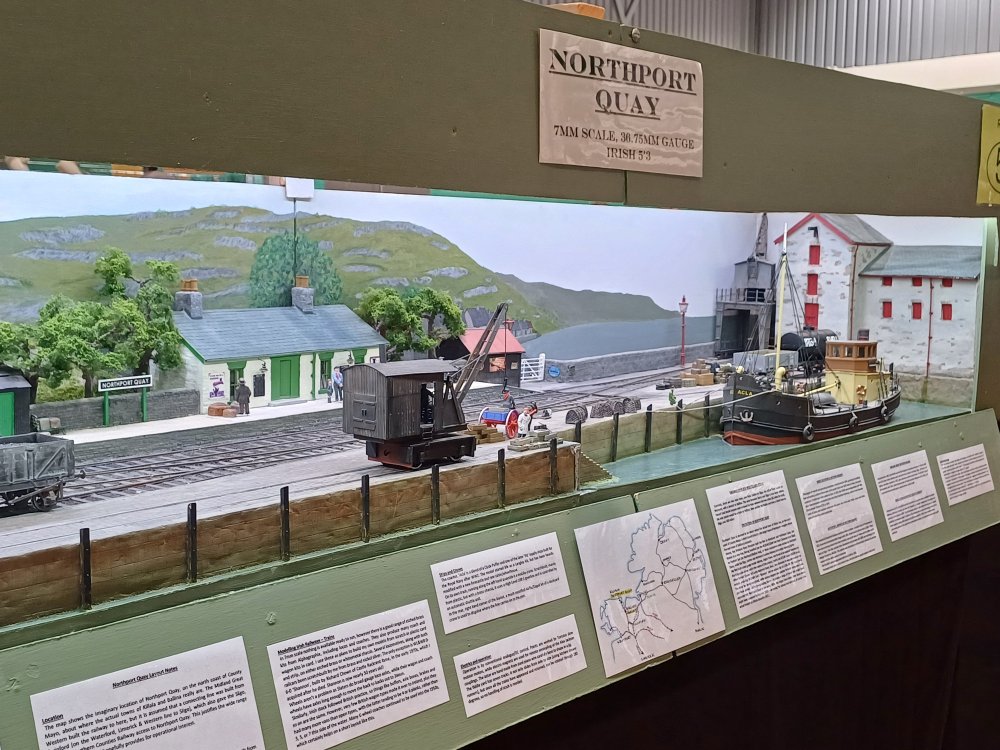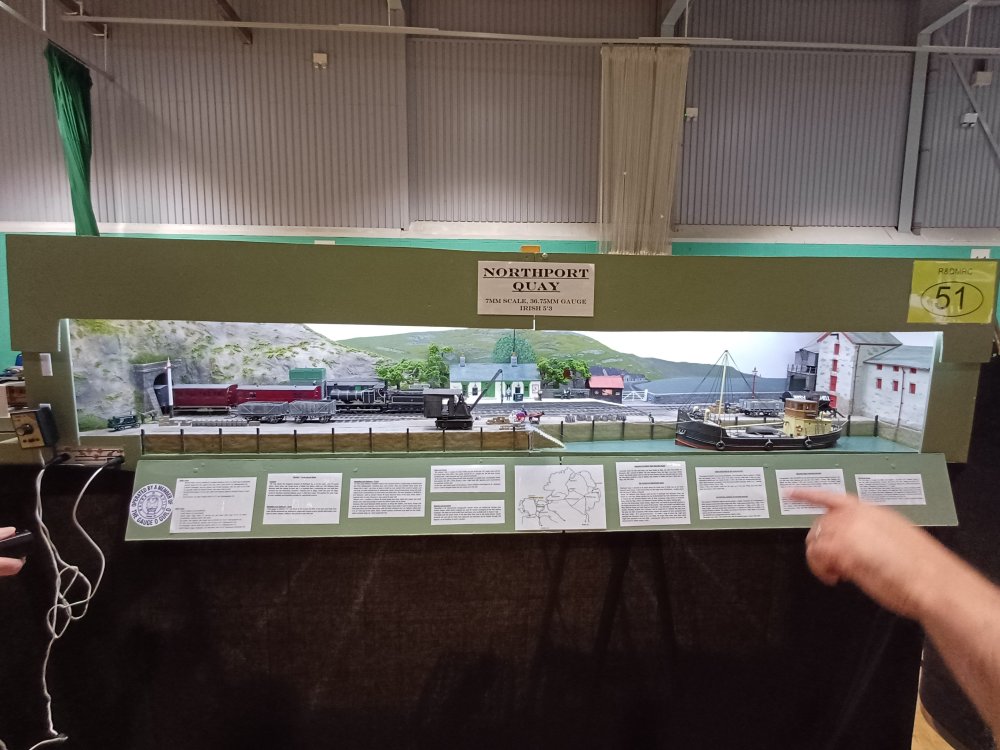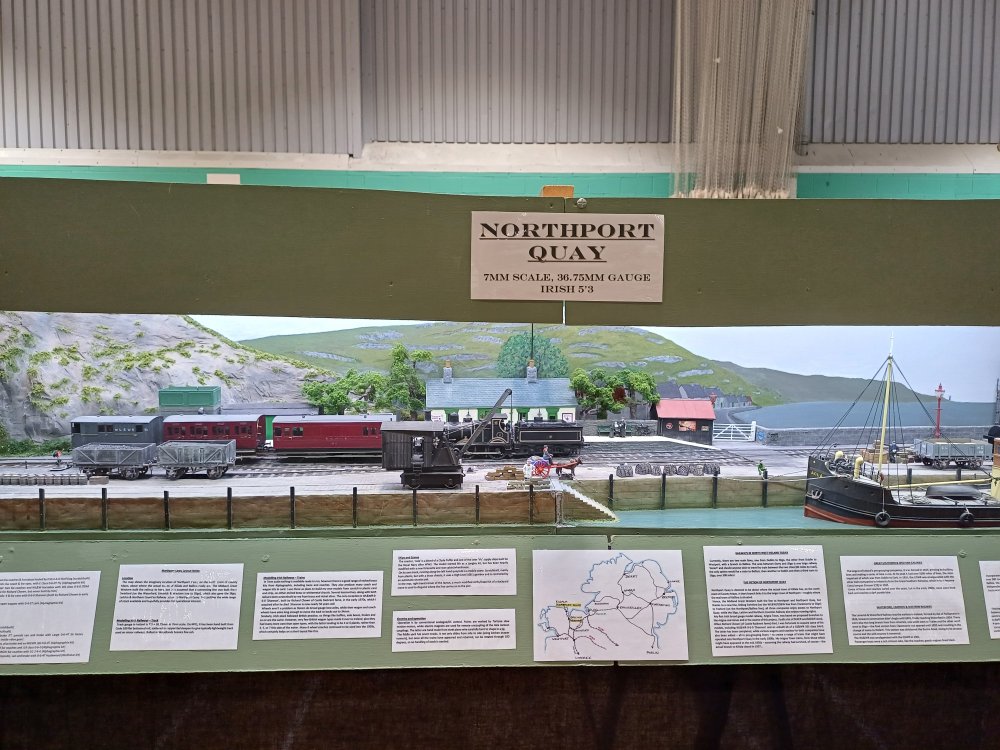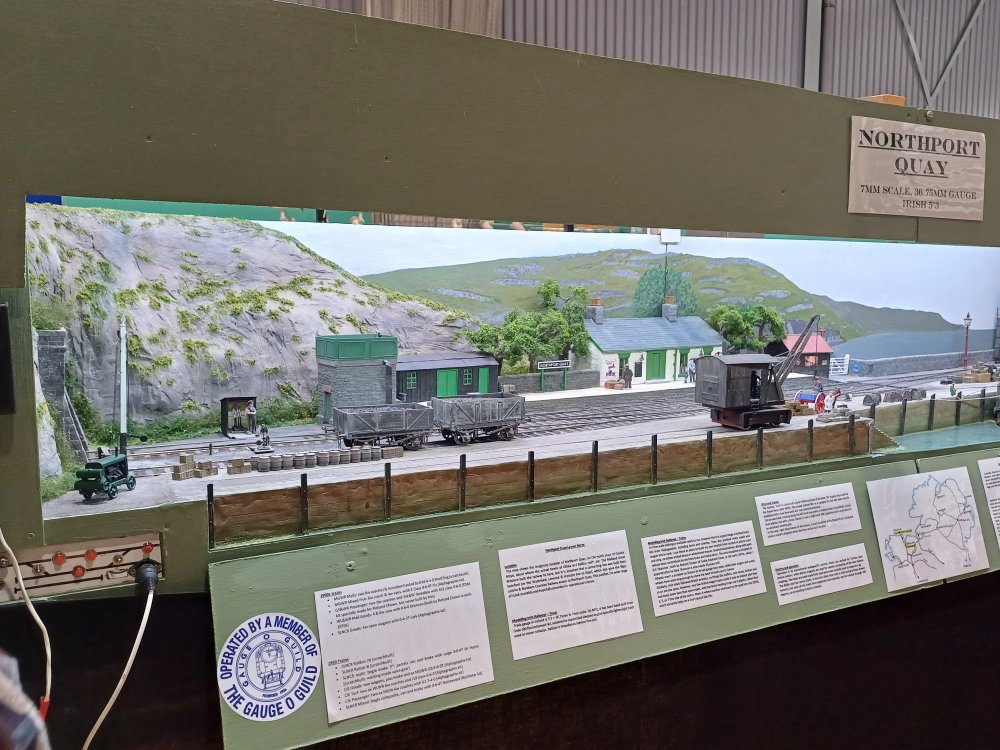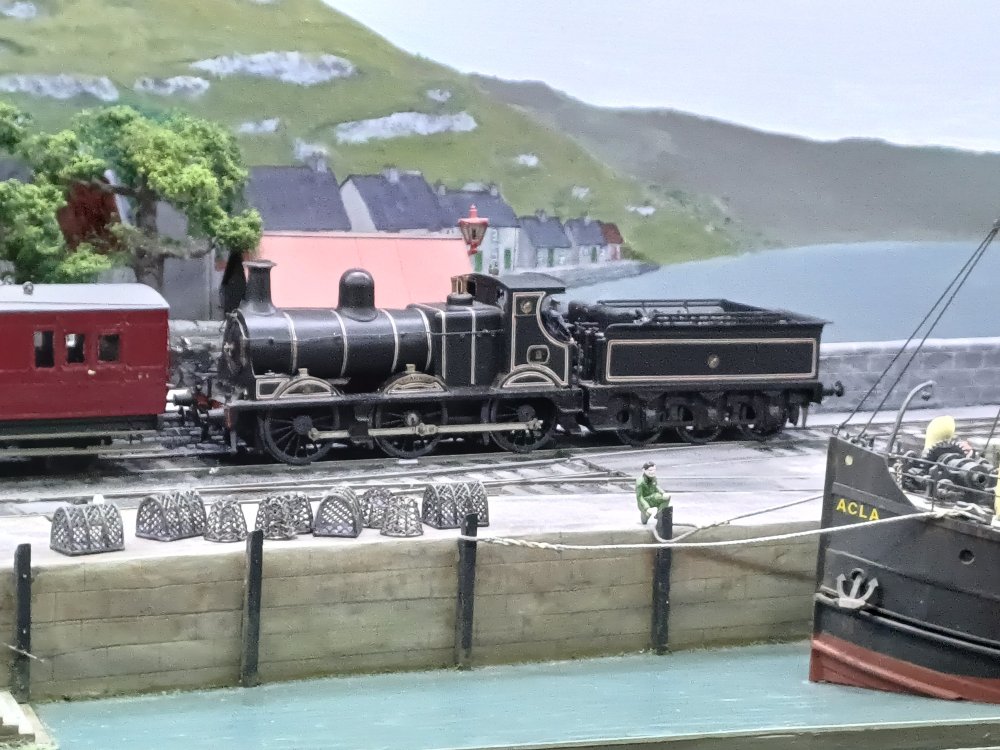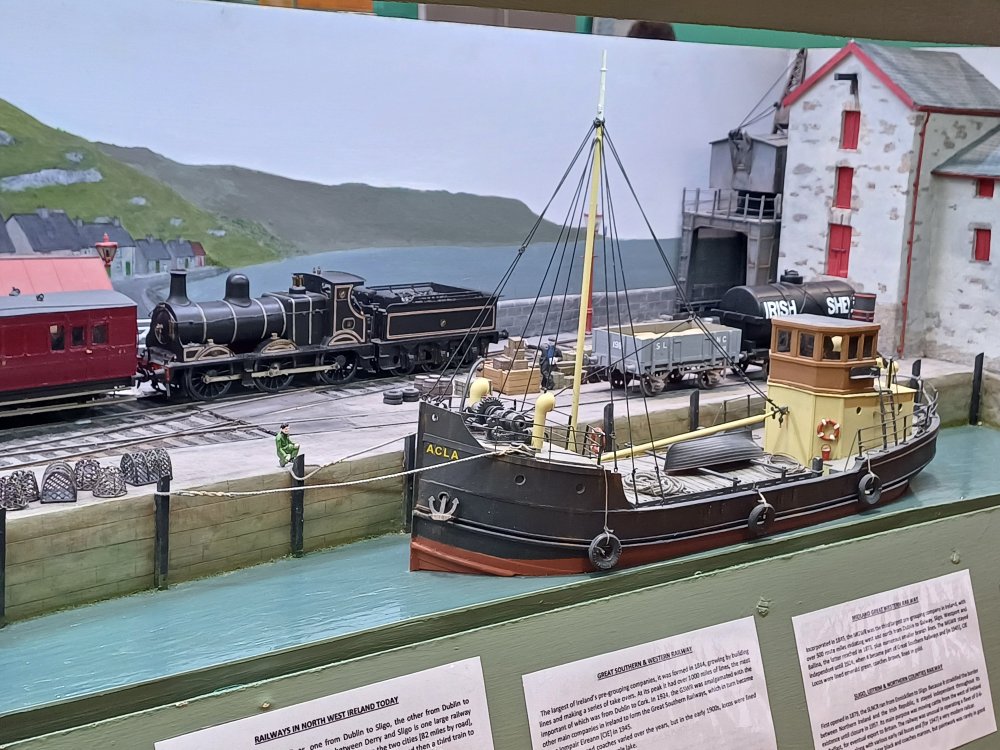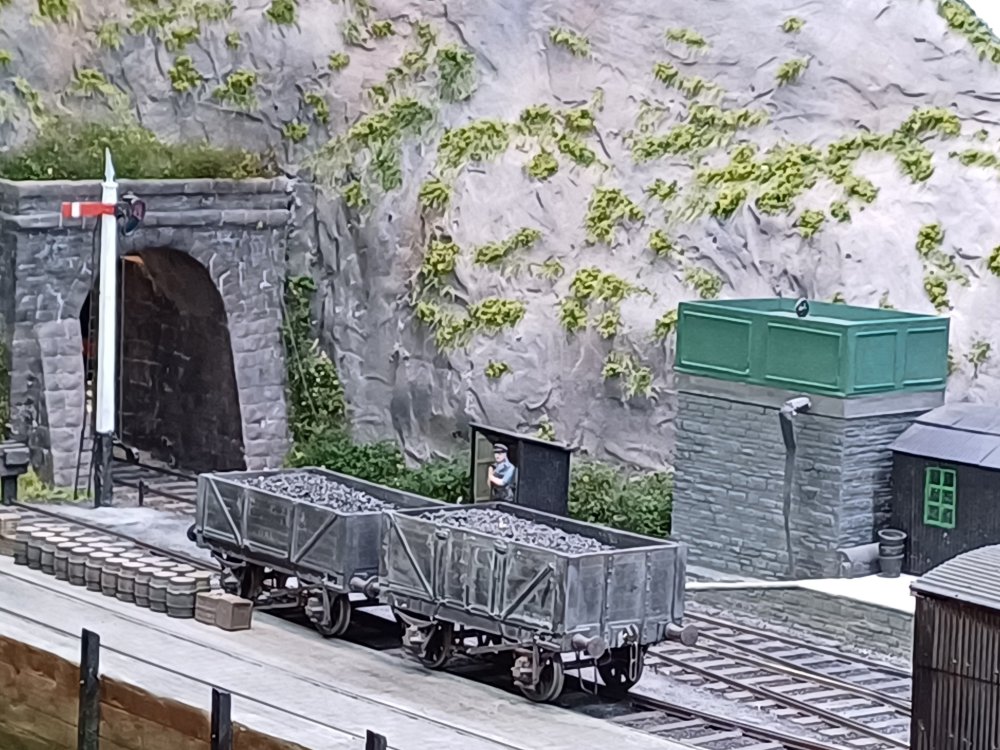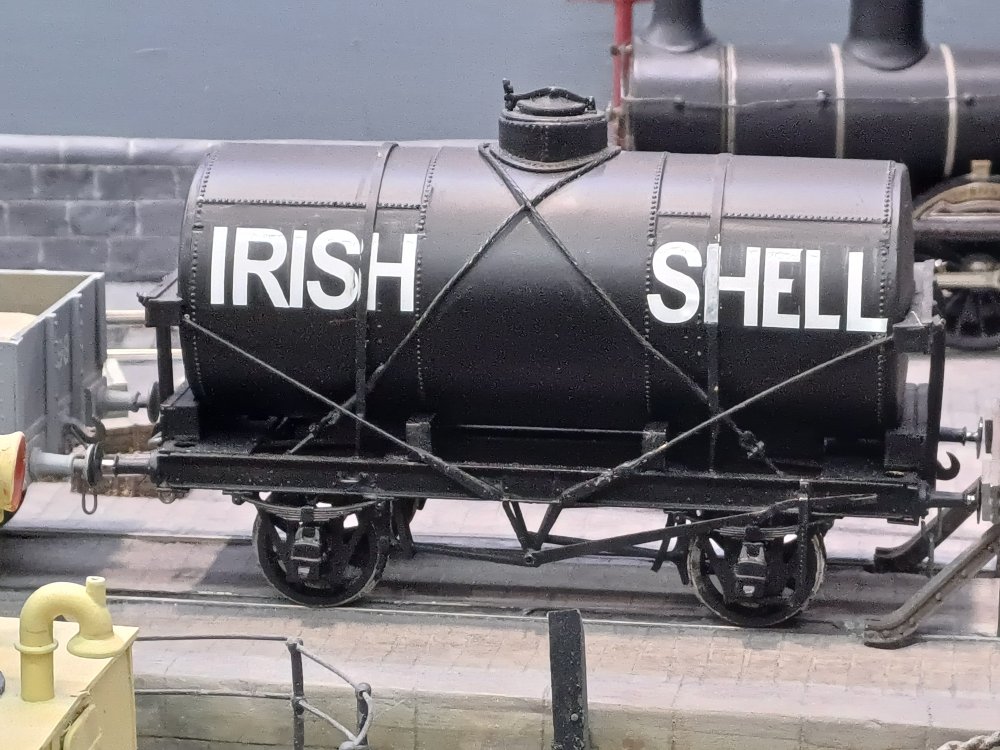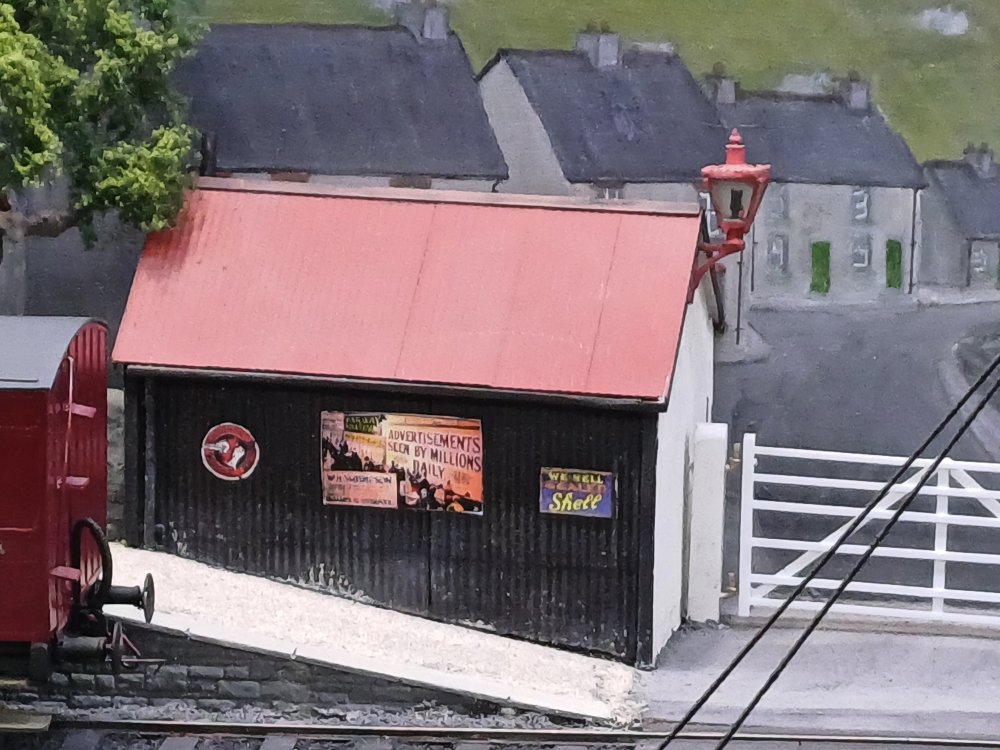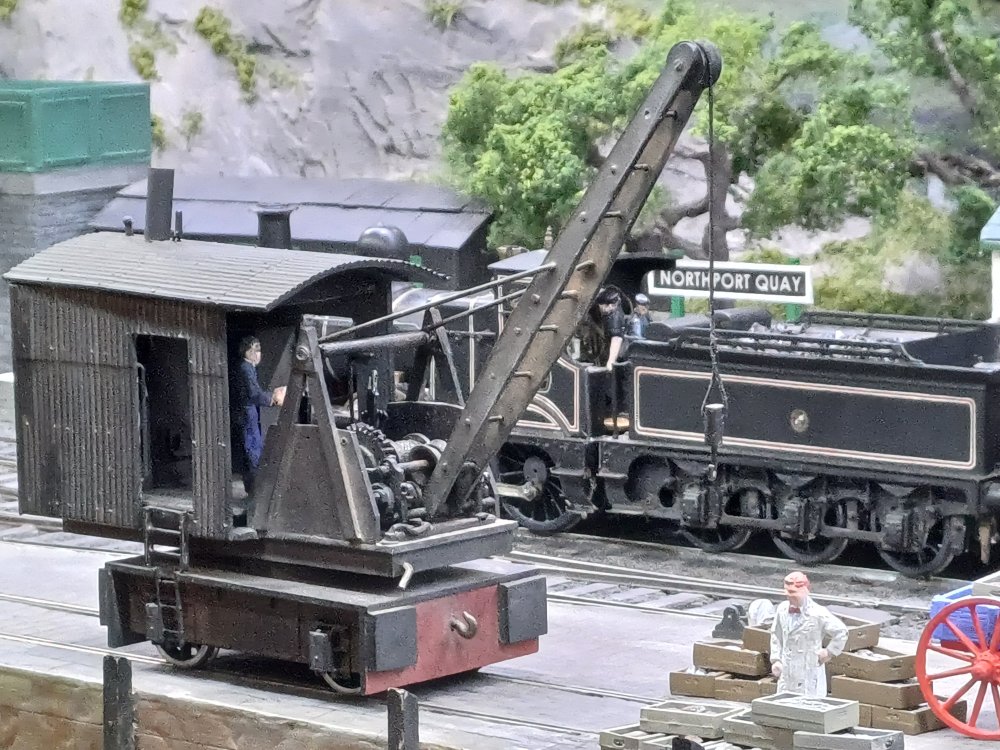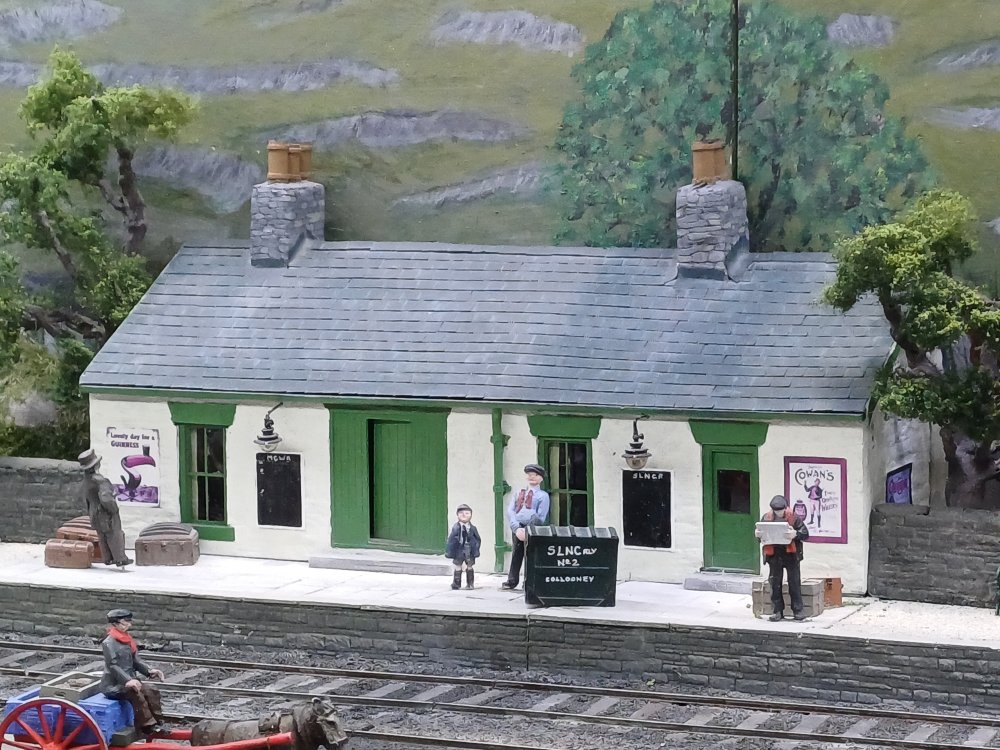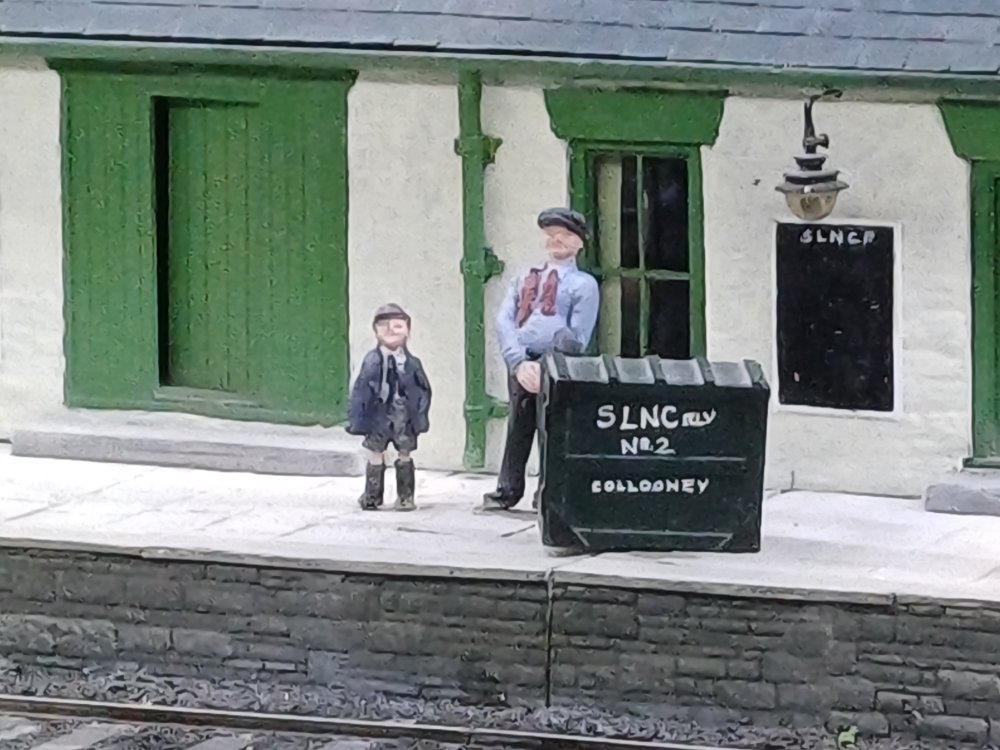-
Posts
2,296 -
Joined
-
Last visited
-
Days Won
4
Content Type
Profiles
Forums
Events
Gallery
Everything posted by Horsetan
-
I stopped by.... Seemed to be working alright, with an occasional sticky uncoupler. The rear wheels on no.2's tender occasionally lost contact with the rail, which suggests the frames or axleboxes may not be quite straight. I even overheard some conversation about a modeller of a real location who, on being told by someone that his father worked at that place and grew runner beans in his garden, actually went so far as to model said plot of runner beans, ready for the next show....
- 18 replies
-
- 11
-

-

-

-
This is what happens when you put a vindictive child in charge. It's all driven by whim.
-
I think he still is.
-
Not just that, but it also replicates - accidentally or otherwise - the wonkiness of the original casting. I reckon Colin Massingham himself would have approved.
-
Sure I might see you there. C&L are attending, so the only flat bottom rail available at the show is likely to be Code 82....again. I don't think anyone will be stocking Peco Code 75 FB.
-
This from the man who builds Colin Massingham's finest (sic) in record time.
-
For general retail: Code 75 FB rail is marketed by Peco, whilst C&L offer Code 83 only. It might be worth seeing whether there's any other FB rail available from HO track suppliers. The finescale societies are not much different in what they offer in the Members' Stores. The EM Gauge Society only has Code 83, which strikes me as a bit "tall", so I held off buying any at the recent annual EMGS show in Bracknell. The Scalefour Society currently stocks both Code 55 and 82 FB. Code 55 would probably be ideal for portraying very lightly-laid lines but may not work very well if you don't use finescale flanges. This weekend is the annual RailEx finescale show in Stoke Mandeville, which is a chance to see if any of the trade stands have suitable stocks of FB.
-
Dublin Logan. Edit to add: there'd be at least three stations named Logan to represent three EuroSong wins.
-
Maybe name 'em after Irish EuroSong winners. Plenty to choose from.
-
Hell will freeze over first
-
British locos and stock that can be disguised as Irish
Horsetan replied to Westcorkrailway's topic in Irish Models
I seem to recall that Lima's early attempts at a Mk1 BG full brake incorrectly came out at a scale 64' instead of 57'. You could do worse than acquiring an old Kitmaster Mk1 BSK or CK kit and using that to break down as per @Mayner 's suggestion -
HMRS are not very good at responding to enquiries about drawings they've listed, but not provided a price for.
-
There's at least fifty shades...
-
Railway history was always a very poor and distant second
-
FTFY
-
Unfortunately antisocial media means that almost everyone does. *shrugs*
-
I don't think he fully understands it either but, equally, he doesn't really care since it won't affect him personally - his finances (dubious at the best of times) are mostly insulated unlike most of his supporting clientèle.
-
They don't want to understand it either.
-
Worst-case scenario: these might be etches from three different types of carriage.
-
You'd need to find out who supplies the factory in China with its paints. Good luck with that.
-
Probably the best one yet, albeit the centre window on each cab end looks a bit mad.
-
trackplan [Answered] Can a 'double deck' layout be achieved?
Horsetan replied to Josef2000's question in Questions & Answers
This is exactly the type of thing. -
trackplan [Answered] Can a 'double deck' layout be achieved?
Horsetan replied to Josef2000's question in Questions & Answers
What I was driving at was that, if you designed the layout along the same principles as the Berlin Anhalter project, you would (or should) end up with a lengthy route arranged in a sort of oval spiral. In the space you have available to you, I'd say this is well worth having a go. It would achieve the two or three levels you want in an unbroken run. This would give you the sensation of seeing the trains appear to travel from station to station, running through open sections of line, just as they do when FREMO enthusiasts have a massive get-together and connect loads of different modules together to form a network.
.png.c363cdf5c3fb7955cd92a55eb6dbbae0.png)

